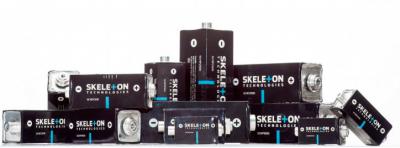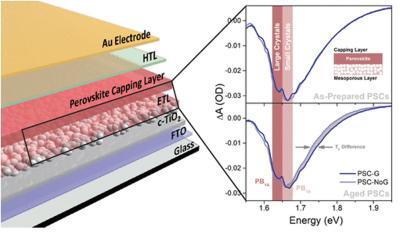The Graphene-Info newsletter, May 2019
Published: Thu, 05/02/19
Huawei Mate P30 Pro adopts a graphene-based heat management film
In October 2018, Huawei announced its Mate 20 X smartphone, which was a gaming smartphone that adopted a graphene film cooling technology for heat management purposes. Now, Huawei launched the Mate P30 Pro smartphone, that adopts a graphene film as well.
The Mate 20 X was a bit of a niche phone, but the P30 Pro is more mainstream one (even though it is quite expensive at around $1,200). Besides the graphene cooling film, the P30 Pro sports a 6.47" 1080x2340 flexible AMOLED display, an under-the-display fingerprint sensor, a Kirin 980 chipset, 6/8 GB of RAM, 64/128/256/512 GB of storage a Nano Memory card slot and a high-end quad-camera setup.
China-based The Sixth Element Materials was the supplier of the graphene film for Huawei's Mate 20 X, and the company updates us that it is also the supplier of the Mate 30 Pro.
UIC team uses graphene to prevent Li-ion battery fires
Lithium batteries' tendency to occasionally catch on fire (an occurrence known as “thermal runaway”) is well documented, and may occur when the batteries overheat or cycle rapidly. Researchers from the University of Illinois at Chicago College of Engineering report that graphene may help with this disturbing issue.
The team thought that by wrapping the very small particles of the lithium cobalt oxide cathode of a lithium battery in graphene, oxygen might be prevented from escaping. The researchers tested this and when they looked at the graphene-wrapped lithium cobalt oxide particles using electron microscopy, they saw that the release of oxygen under high heat was indeed reduced significantly compared with unwrapped particles.
Next, they bound together the wrapped particles with a binding material to form a usable cathode, and incorporated it into a lithium metal battery. When they measured released oxygen during battery cycling, they saw almost no oxygen escaping from cathodes even at very high voltages. The lithium metal battery continued to perform well even after 200 cycles.
The Graphene Flagship announces its 2019-2030 graphene application roadmap
The EU Graphene Flagship has published its graphene application roadmap, showing when the flagship expects different graphene applications to mature and enter the market.
As can be seen in the roadmap above (click here for a larger image), the first applications that are being commercialized now are applications such as composite functional coatings, graphene batteries, low-cost printable electronics (based on graphene inks), photodetectors and biosensors.
Next in line the flagship sees more advanced applications starting to appear after 2022 - such as solar cells and flexible perovskite panels, supercapacitors, water treatment, neural interfaces, and flexible devices. In 2030 and beyond, the flagship sees graphene related materials being adopted in drug delivery, spintronics devices, wireless network, fuel cells and more.
Updates on Skeleton Technologies
Skeleton Technologies, an Estonia-based company that produces graphene-based supercapacitors and energy storage systems, is planning to invest €25 million in its plant located in the German state of Saxony. With this investment, Skeleton aims to expand its research and development as well as scale its production.
In addition, a recent study led by the US Naval Surface Warfare Center in Philadelphia, along with researchers at the University of Texas at Arlington, has compared the performance of supercapacitors from four different manufacturers: Maxwell, Ioxus, JM Energy, and Skeleton. Of the four tested, only the Skeleton supercapacitors are graphene-enhanced. The researchers found that the Skeleton cell far outperformed the other cells tested, and graphene was mentioned as the probable cause for this efficiency.
Graphene inks help stabilize the stability of innovative perovskite solar cells
Researchers from the Graphene Flagship have developed hybrids of graphene and molybdenum disulphide quantum dots to stabilize perovskite solar cells (PSCs). PSCs are a novel type of solar cells which are efficient, relatively easy to produce, made with cheaper materials and, due to their flexibility, can be used in locations where traditional silicon solar cells cannot be placed.
A collaboration between the Graphene Flagship Partners Istituto Italiano di Technologia, University of Rome Tor Vergata, and BeDimensional resulted in a novel approach based on graphene and related materials to stabilize PSCs, thus addressing the stability issue of PSCs, a major hurdle hindering their commercialization.
The team used molybdenum disulphide quantum dot/graphene hybrids to address PSCs' instability issue. The collaboration between research institutions and industrial partners enabled by Graphene Flagship, yielded an ink based on graphene and related materials (GRMs). Layering this over the PSCs caused them to drastically increase in stability.
Graphene-Info updates its graphene market reports
Graphene-Info’s market reports are now updated to April 2019! Graphene-Info provides comprehensive niche graphene market reports, and our reports cover everything you need to know about these niche markets.
Among the newly updated reports are: The Graphene Oxide Market Report, The Graphene Batteries Market Report, The Graphene for the Display and Lighting Industries report and The Graphene Investment Guide.
MediaDevil, a UK-based maker of various phone, laptop and tablet accessories, is now selling the Artisanphonics CB-01 Earphones - Noise-isolating Premium Wood Earphones with Nanene Graphene-Enhanced Audio.
Scientists from ICFO have developed a novel graphene-enabled photodetector that operates at room temperature, and is sad to be highly sensitive, very fast, with a wide dynamic range and covers a broad range of THz frequencies.
Researchers from Nankai University in China and Rice University in the U.S. have developed a type of graphene-based foam that retains its texture when exposed to extremely cold temperatures.
Researchers at Chalmers University of Technology, Sweden, have recently developed a promising breakthrough for lithium sulphur batteries, using a catholyte with a graphene sponge.
Researchers from Rice University, the Texas A&M Health Science Center and the McGovern Medical School at The University of Texas Health Science Center at Houston (UTHealth) have found that graphene quantum dots drawn from common coal may be the basis for an effective antioxidant for people who suffer traumatic brain injuries, strokes or heart attacks.
Researchers at the Norwegian University of Science and Technology's (NTNU) Department of Electronic Systems, led by professors Helge Weman and Bjørn-Ove Fimland, have succeeded in building UV LEDs by growing AlGaN nanowires on graphene.
Archer Exploration has printed and patterned ink formulations of human antibodies on graphene-based biosensor components derived from the company’s Campoona graphite.
The Institute of Low Temperature and Structure Research (Wroclaw, Poland) has developed a new efficient white light source that uses graphene foam excitated by a continuous-wave laser and the researchers demonstrated the technology at IDTechEx Graphene & 2D Materials Europe 2019 earlier this month.
Advanced Material Development (AMD) recently announced that it has successfully applied for funding via the UK Defense and Security Accelerator (DASA), and will be receiving funds of around £83,000 (about $108,400 USD).
Do you have a friend or a colleague that might be interested in Graphene technology? Forward this mail to update him on the world of Graphene.
If you received this email from a friend, subscribe to this newsletter here!








